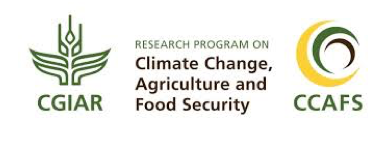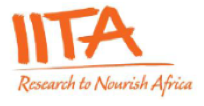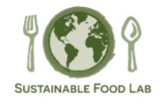To track progress against resilience objectives, companies will need to use diagnostic and monitoring tools to better understand specific climate risk, build resilience, and regularly measure conditions on the ground. Companies can conduct monitoring at different levels: 1) through a landscape approach, used to diagnose and measure progress on performance across broader geographic areas, such as with issues including fresh water and forests, generally in collaboration with other actors, or 2) by measuring the progress and results of on-farm interventions, including the use of climate-smart practices.
Both can include monitoring short-term climate variability, climate-related shocks, and longer-term climate change; as well as monitoring activities put in place to build resilience within farming communities.
Tools to help diagnose climate vulnerability and monitor resilience building efforts
CI landscape Assessment Framework
There are a few issues that truly require landscape level thinking, including freshwater management and forest restoration or protection, where lasting benefits are seldom achieved by a supply chain approach through a farm by farm basis. In the case of coffee, waters can be polluted or diverted upstream, affecting coffee farms, or erosion and chemicals from coffee farms can drift into waterways from coffee affecting downstream quality.
Conservation International's Landscape Assessment Framework (LAF) is a structure for measuring, monitoring and communicating the sustainability of a landscape based on existing metrics and datasets. More specifically, the LAF assesses the overall status of a landscape in terms of sustainability, determines appropriate intervention and then can be used to monitor changes over time using those same indicators. The assessment reflects the status of human wellbeing, governance, production and natural capital within a landscape. This framework allows for a rapid review of a landscape which serves as the basis to identify needs and design solutions that can be enacted by a variety of landscape actors.
Conservation International has produced a body of work on ecosystem-based adaption, focusing on conservation, sustainable management and restoration of natural ecosystems to help people adapt to climate change. Working together with Tropical Agricultural Research and Higher Education Center (CATIE), their CASCADE project is working to identify and test EBA strategies, such as restoration and protection of forests and managing for future water supply in Costa Rica, Honduras and Guatemala. For more information, visit Conservation International’s website focusing on Central America or for a broader look view the Ecosystem-based adaption website.
Simplified COSA Resilience Assessment
COSA resilience assessments offer a fundamental basis for conducting sound science to get answers where pragmatic approaches are more suitable than complex academic efforts. This can include helping companies to understand their supply risks and invest wisely to improve that resilience in terms of climate and related factors and for organizations or projects that want to understand the key resilience factors in the absence of a dedicated budget to do so. Most firms and many organizations do not have the capacity to do that cost-effectively or even in ways that can be comparable across different regions to enable benchmarking and smarter choices. COSA worked with the leading organizations in the field over the course of several years to distill global best practices and to create a simplified approach that allows resilience measurement in any situation. The members shown below, distill best practices and then streamline information so anyone can use and understand resilience metrics.

COSA standardized Resilience Indicators help companies to measure resilience in agricultural communities cost-effectively and with scientific rigor. By offering a standardized approach, we open opportunities for comparing across regions and benchmarking. With as few as a handful of KPIs, any organization can begin to understand the vital components for thriving communities and lasting poverty reduction. Here are some useful links to their work:
A selection of Basic, Core, and Complete indicators along with their definition and metrology.
Concise insights gathered by testing COSA’s resilience measurement approach and its usefulness and adaptability for varying projects with different aims and scales
Resilience is a key factor to address poverty and inequality and yet work on this topic is severely hindered because current methods, while good, are very costly and require substantial expertise to understand. With the support of the Ford Foundation, we undertook to build on the best of current global practices but in a fundamentally new way by streamlining and creating more pragmatic options to understand resilience.
How Do I Know if My Investment in Climate-Smart Agriculture is Working?
Would you like to ensure that your commodity business is doing all that it can to become climate resilient? To track progress in building supply chain resilience, companies will need to monitor the resilience conditions on the ground and the assess the results of their implemented solutions. Learn about monitoring and evaluation tools to assess climate resilience, including key performance indicators, that can help to track initiatives and inform decision-making. COSA’s President, Daniele Giovannucci, and Resilience expert, Elena Serfilippi Ph.D., are featured on the Global Coffee Platform’s Online Learning Series webinar.
Resilience Measurement and Conceptual Frameworks
This work, published in the Annals of Public and Cooperative Economics, evaluates the strengths and weaknesses of the most prominent resilience measurement tools and provides development practitioners a standardized resilience model and appropriate tested indicators.
Fostering resilience through territorial and bio-cultural assets
In many countries, especially less developed ones, there are considerable intangible assets that are often not captured or even valued by markets but decades of experience building systematic approaches can alter that and create new opportunities and considerable public good.
GCP Common Metrics
The Global Coffee Platform, together with many other members and partners, are developing an online tool that will collect, analyze, and report data so that the coffee sector can monitor and evaluate not only the contribution of their individual activities but the overall impact of our sector to the Sustainable Development Goals (SDGs). Please check back for a link to the online tool.
Metrics to Measure Progress Towards Climate-Smart Agriculture (CSA) Goals
The CGIAR Research Program on Climate Change, Agriculture and Food Security (CCAFS) has developed a Public access CSA Programing and Indicator Tool to support investors and implementers such as governments, multi-and bilateral donors, development agencies, NGOs and the private sector, in identifying common metrics and tracking the CSA related outcomes and impacts of their interventions. The tool is supported by a database of over 378 indicators gathered from international development agencies such as the Food and Agriculture Organization of the United Nations (FAO), the United Kingdom Department for International Development (DFID), the Adaptation for Smallholder Agriculture Programme of the International Fund for Agricultural Development (IFAD), the World Bank and the United States Agency for International Development (USAID) and revisited through a CSA lens to identify their relevance to its three pillars. The database has been further developed into a publicly accessible CSA programming and indicator tool. The tool proposes a shared framework for agricultural programs to:
- Examine to what extent current or planned intervention(s) address each CSA pillar
- Compare the scope and CSA intentionality among different project designs to make future programming more climate-smart, and
- Support the identification and selection of an appropriate set of indicators to measure and track CSA-related outcomes.
Triangulation Rapid Risk Assessment & On-Farm Climate Change Vulnerability Tool
HRNS' Triangulation Rapid Risk Assessment and On-Farm Climate Change Vulnerability Tool can be used to collect information from scientists, extensionists and farmers to help understand the most extreme climate change effects facing a particular area. While the two assessments are not required to use together, they were designed to complement each other. The information gleaned from the assessments can help form a strategy and help select practices for farmer adaptation. Assessments using the Triangulation Rapid Risk Assessment have been conducted in Minas Gerais (Brazil), Trifinio (Guatemala, Honduras), Mbeya (Tanzania) and Central Highlands (Vietnam). For more information on these local risk assessments view c&c’s toolbox.
Cool Farm Tool
The Cool Farm Tool (CFT) is an online decision support tool that estimates the environmental impacts of food production. The CFT estimates on-farm greenhouse gas emission, biodiversity and water metrics from crops and livestock. The CFT was developed for use by farmers and is now managed by the Cool Farm Alliance, a member organization whose membership consists major global brands, Universities and NOGs including Unilever, PepsiCo, Nestle, Tesco, Yara, Fertilizers Europe, SAI platform, Solidaridad, among others. The CFT is based on three main principles: 1) rigorous science foundation, 2) farmer-friendliness, 3) industry relevance.
In the last decade CFT has become one of the most widely used tools for assessing greenhouse gas, biodiversity and water metrics in agriculture. CFT is unique because the tool is free for farmers and includes seven different inputs including questions like farm setting, growing area, field treatment and transport. The tool is quick and easy, only taking minutes to get a rough estimate of your footprint by entering information off the top of your head.
The tool has been piloted in coffee systems in East Africa and Central America. A recent presentation given by CFA member Solidaridad, in which CFT was utilized, can be viewed here. The Cool Farm Alliance is also working with their research and innovation hub to upgrade the tool’s calculations for perennial crops like coffee, cocoa and temperate orchard crops.
Rainforest Alliance
The Rainforest Alliance provides many trainings and online tools for farmers and companies. Their online training resource is easy to search and provides material around topics like climate change, water and pesticides. A full list of their training resources can be found online. More information about their work with coffee can be found here.





